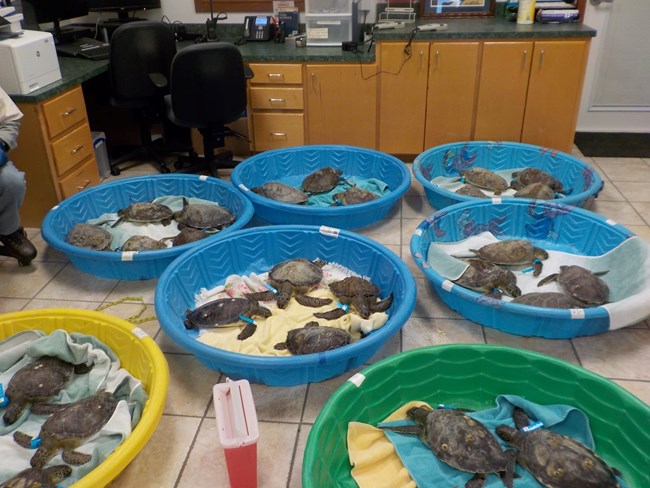Yes, sea turtles are cold-blooded animals that rely on their external environment to regulate their body temperature. Sea turtles are fascinating creatures that have captivated the hearts of many people around the world.
These ancient reptiles, which have been swimming the Earth’s oceans for millions of years, belong to the Chelonioidea family. There are seven species of sea turtles: the green turtle, loggerhead turtle, leatherback turtle, hawksbill turtle, Kemp’s ridley turtle, olive ridley turtle, and flatback turtle.
While they differ in size, habitat, and behavior, one characteristic that they all share is being cold-blooded. This means that their body temperature is dependent on the surrounding environment. As a result, sea turtles actively seek out warm waters and bask in the sun to raise their body temperature. Understanding the basic biology of sea turtles, including their cold-blooded nature, is essential for their conservation and protection.

Credit: www.facebook.com
Cold-blooded Nature Of Sea Turtles
Sea turtles are fascinating creatures that have some unique characteristics due to their cold-blooded nature. Like other cold-blooded animals, sea turtles rely on external sources to regulate their body temperature. They do not have the ability to generate their own heat internally, so they must rely on the warmth of the sun or the surrounding environment to stay warm.
Sea turtles are ectothermic, meaning their body temperature varies with the temperature of their surroundings. This characteristic allows them to conserve energy and survive in various environments. However, it also means that sea turtles are vulnerable to changes in temperature, which can impact their overall health and survival.
The external environment plays a crucial role in the life of sea turtles. The nest temperature affects the sex of the hatchlings, with warmer temperatures producing more females and cooler temperatures producing more males. Additionally, sea turtles rely on warm waters for feeding, migration, and nesting purposes.
In conclusion, the cold-blooded nature of sea turtles presents both advantages and challenges. Understanding and preserving their unique characteristics is essential for their conservation and protection.

Credit: www.fisheries.noaa.gov
Misconceptions And Debates
In the ongoing debate surrounding the classification of sea turtles, there are differing opinions on whether they are warm-blooded or cold-blooded creatures. Proponents of sea turtles being warm-blooded argue that these majestic ocean dwellers have the ability to regulate their body temperature internally, allowing them to adapt to different environmental conditions and maintain a consistent body temperature.
On the other hand, those who believe sea turtles are cold-blooded argue that these creatures rely on external sources of heat to regulate their body temperature. They point to the fact that sea turtles bask in the sun to warm themselves and that their body temperature can fluctuate with changes in their environment.
Despite the ongoing controversy surrounding the classification of sea turtles, scientists continue to study and conduct research to gather more information about these fascinating creatures. By understanding their physiology and behavior, we can gain a better understanding of sea turtles and the unique ecosystem in which they thrive.

Credit: www.nps.gov
Conclusion
Sea turtles, like other reptiles, are indeed cold-blooded creatures. Their body temperature varies depending on their surroundings, as they cannot regulate it internally. Understanding this fundamental aspect of their physiology is crucial for their conservation and protection. By recognizing their unique adaptations, we can better appreciate and safeguard these majestic creatures, ensuring their survival in the face of ongoing environmental challenges.
So let’s continue to educate and raise awareness about the importance of protecting these beautiful sea turtles and their habitat. Together, we can make a difference.





Leave a Reply